 | Mars symbol (U+2642 ♂). The symbol for a male organism or man. |
 | Venus symbol (U+2640 ♀). The symbol for a female organism or woman. |
Bauhaus 學生人數
年 女 男
1919 101 104
1920 59 78
1921 44 64
1922 48 71
1923 35 106
1924 45 82
1925 28 75
1926 28 73
1927 41 125
1928 46 130
1929 58 143
1930 44 122
1931 53 141
1932 25 90
1933 5 14
----
Bauhaus 女傑,德文版多本,這是英文
NEW
Bauhausmädels. A Tribute to Pioneering Women Artists
Meet trailblazers like Marianne Brandt, Gertrud Arndt, and Lucia Moholy in Bauhausmädels—or “Bauhaus girls”, a term that expressed admiration for the young women who bravely eluded traditional gender roles to build a different future. With never-before-seen portraits and biographies, this is a unique celebration of the Bauhaus centennial and a long-overdue tribute to the school’s women artists.
----
Like sitting on air
Mart Stam Cantilever Armchair - 1926 without (S 33) and with armrests (S 34) These chairs are the first cantilever chairs in furniture history. They were used for the first time in 1927 in the Weissenhof-Siedlung in Stuttgart. Starting in 1925, Mart Stam experimented with gas pipes that he connected with flanges and developed the principle of cantilevering chairs that no longer rest on four legs. He thus created a construction principle that became an impo⋯⋯
更多Mart Stam Cantilever Armchair - 1926 without (S 33) and with armrests (S 34) These chairs are the first cantilever chairs in furniture history. They were used for the first time in 1927 in the Weissenhof-Siedlung in Stuttgart. Starting in 1925, Mart Stam experimented with gas pipes that he connected with flanges and developed the principle of cantilevering chairs that no longer rest on four legs. He thus created a construction principle that became an impo⋯⋯
Marianne Brandt - The Iron Lady
Marianna Brandt - German artist, sculptor, photographer and designer. The first and only woman who was admitted to the Bauhaus metal workshop, later taught in this workshop together with Laszlo Moholi Nadi, and in 1928 she headed it. Designed by Marianne Brandt household items are considered the forerunners of modern industrial design.
From memories M. Brandt
"... At that time I didn’t really like the painting they were doing there, and I didn’t feel that I could move in that direction. I was not at all interested in monumental painting, and in the textile workshop I didn’t like the atmosphere there. It would be interesting to do wood, but it required a lot of physical strength. In general, I discussed this issue with Moholi, and we decided that metal is what you need ... ... At first, they gave me all the most uninteresting, tedious and monotonous work It’s impossible to count how many hemispheres I patiently poke and, believing that the way it should, that the beginning is always difficult. But then everything will work out, and we became friends ... At that time we could not even dream about Plexiglas and other plastics. If we had them, it is unknown what other peaks we could reach. Well, in general, it’s good - after all, it’s necessary that those who come after us have something to do! ... "
"Bauhaus-style" - Brandt's programmatic response to Naum Gabo's skeptical article "Design?" ("Gestaltung?") In which Gabo calls the Bauhaus design superficial and anti-constructivist.
"... the author does not know us at all if he believes that we are trying to create a certain style, and that, for example, a round lamp was created solely because of admiring the pure forms of the sphere and cylinder. Today, we must start from the totality functional ideas, drawn from practical experience and our projects, which we repeatedly check and calculate. Of course, one cannot do without intuition and a general sense of balance ... yes, we make mistakes - this is inevitable, but every day they become less and less. .. "




還有 9 張
Баувху/Bauwchu 在 Marianne Brandt - The Iron Lady 相簿中新增了 12 張相片。說這專頁讚
2015年7月18日
Marianna Brandt German artist, sculptor, photographer and designer. The first and only woman who was admitted to the Bauhaus metal workshop, later taught in thi⋯⋯
----
set up Ontos Weaving Workshops in Herrliberg, near Zurich, Switzerland, returned to become the weaving studio's technical director, replacing Helene Börner, and work with Georg Muche, who would remain the form master. Although she was not officially made a junior master until 1927, it was clear both the organization and content of the workshop were under her control. It was obvious from the start, the pairing of Muche and Stölzl was not enjoyed by either side, and resulted in Stölzl running the workshop almost single-handedly from 1926 onward.
The new Dessau campus was equipped with a greater variety of looms and much improved dyeing facilities, which allowed Stölzl to create a more structured environment. Georg Muche brought in Jacquard looms to help intensify production. He saw this as especially important now as the workshops were the school's main source of funding for the new Dessau Bauhaus. The students rejected this and were not happy with the way Muche had used the schools funds. This, among other smaller events, instigated a student uprising within the weaving department. On March 31, 1927, despite some staff objections, Muche left the Bauhaus. With his departure, Stölzl took over both as form master and master crafts person of the weaving studio. She was assisted by many other key Bauhaus women, including Anni Albers, Otti Berger and Benita Otte.
Stölzl began trying to move weaving away from its ‘woman’s work’ connotations by applying the vocabulary used in modern art, moving weaving more and more in the direction of industrial design. By 1928, the need for practical materials was highly stressed and experimentation with materials such as cellophane became more prominent. Stölzl quickly developed a curriculum which emphasized the use of handlooms, training in the mechanics of weaving and dyeing, and taught classes in math and geometry, as well as more technical topics such as weave techniques and workshop instruction. The earlier Bauhaus methods of artistic expression were quickly replaced by a design approach which emphasized simplicity and functionality.
Stölzl considered the workshop a place for experimentation and encouraged improvisation. She and her students, especially Anni Albers, were very interested in the properties of a fabric and in synthetic fibers. They tested materials for qualities such as color, texture, structure, resistance to wear, flexibility, light refraction and sound absorption. Stölzl believed the challenge of weaving was to create an aesthetic that was appropriate to the properties of the material. In 1930, Stölzl issued the first ever Bauhaus weaving workshop diplomas and set up the first joint project between the Bauhaus and the Berlin Polytex Textile company which wove and sold Bauhaus designs. 1In 1931 she published an article entitled “The Development of the Bauhaus Weaving Workshop”, in the Bauhaus Journal spring issue. Stölzl's ability to translate complex formal compositions into hand woven pieces combined with her skill of designing for machine production made her by far the best instructor the weaving workshop was to have. Under Stölzl's direction, the weaving workshop became one of the most successful faculties of the Bauhaus.
Marianne Brandt - Self portrait on mirrored sphere at Bauhaus Dessau - 1929
https://www.facebook.com/…/a.14484696521…/1471766016470168/…
看歐洲幾個電視台:法、英女子多走上街頭;德國電視台和訪問建築教授。多長得很好......
法國自稱是builder王國,其實,頭200年蓋好巴黎聖母院的,是"國際工人".....
20世紀1919~32的德國Bauhaus就是要發揮中世紀的"合作"精神。當時法國繪畫藝術強,驕傲,措失良機。
慶祝Bauhaus 90周年的書,很好,10年老書自有它的魅力。

Eugen Batz
The spatial effect of colours and forms, 1929/30
Tempera over graphite on black paper
30.2 x 32.9 cm
Bauhaus-Archiv Berlin
© VG Bild-Kunst, Bonn 2009

Bauhaus_ literally means “House of Building” or “Building School”. Back in 1919, in the town of Weimar in Thuringia - Germany the design revolution began. World renowned architect Walter Gropius established an academy to teach up-to-date ideas in color theory, painting, printmaking, pottery, industrial design, interior design, weaving and textiles, typography and graphic design. Nonetheless, despite the school’s name architecture was not taught; students who wished to be educated on building design were sent to work in Gropius’s private architecture office.

Walter Gropius, 1928
in front of his design for the Chicago Tribune Tower of 1922
Photo: Associated Press, Berlin
Bauhaus-Archiv Berlin
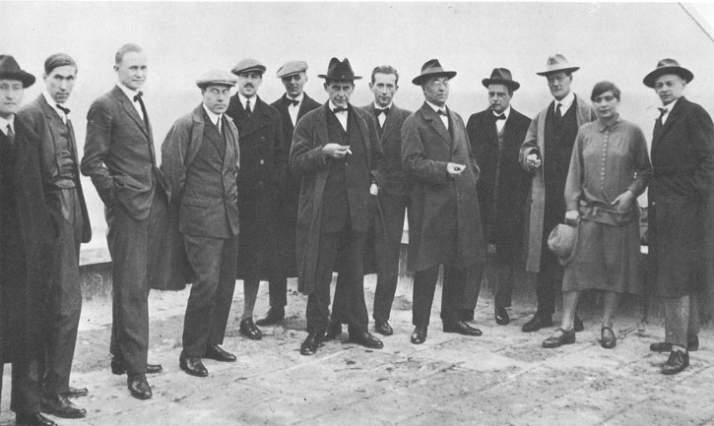
The Bauhaus Masters in 1926
(on the roof of the Bauhaus building, 4 December 1926)
left to right: Josef Albers, Hinnerk Scheper, Georg Muche,
László Moholy-Nagy, Herbert Bayer, Joost Schmidt, Walter Gropius,
Marcel Breuer, Wassily Kandinsky, Paul Klee, Lyonel Feininger, Gunta Stölzl, Oskar Schlemmer
Photo: unknown
Bauhaus-Archiv Berlin / Musée National d’Art Moderne / Centre Pompidou
Today, 90 years later all eyes are on Weimar, Jena and Erfurt as the crucial meeting points of the Bauhaus anniversary. The Bauhaus, was the most important and influential school of design of the 20th century despite the few years of its existence. Till present day the Bauhaus has had a long lasting impact on art, design, architecture and every day life, mostly because of the principle of form. Various classic and influential design objects of the 20th century were developed in Weimar during the Bauhaus from 1919 – 1925.
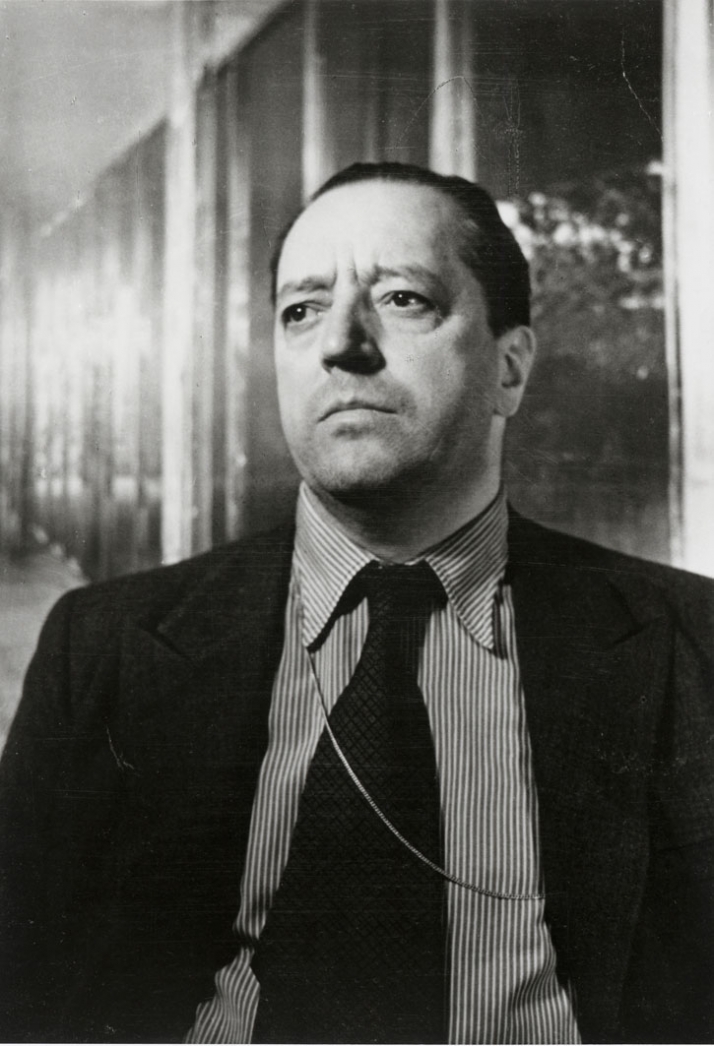
Ludwig Mies van der Rohe, 1934
Photo: Werner Rohde
Bauhaus-Archiv Berlin

Ludwig Mies van der Rohe
Contribution ‘Wabe’ (honeycomb) to the idea competition for the skyscraper at the Bahnhof Friedrichstrasse, 1922
Large photograph, supplemented by drawing
140 x 100 cm
Bauhaus-Archiv Berlin
© VG Bild-Kunst, Bonn 2009
For the occasion of the 90th anniversary of the Bauhaus, as of July 22nd – October 4th 2009 the Modell Bauhaus in Weimar is presenting the exhibition “Berlin // Martin - Gropius - Bau”, where it primary focuses on the early years of the world renown school of design. The aim of this exhibition is to portray Weimar as a laboratory where ideas and thoughts that were conceived subsequently reached a mature state deriving approval worldwide. The innovative approaches and impulse affected the world of design developed at the Bauhaus up till current day.
The exhibit will present well known and less known features of the Bauhaus were the assignments from the school workshops are presented as the highlights, as well as works of the Bauhaus masters. Over 900 objects from international collections will be exhibited including loans from collections of other museums.
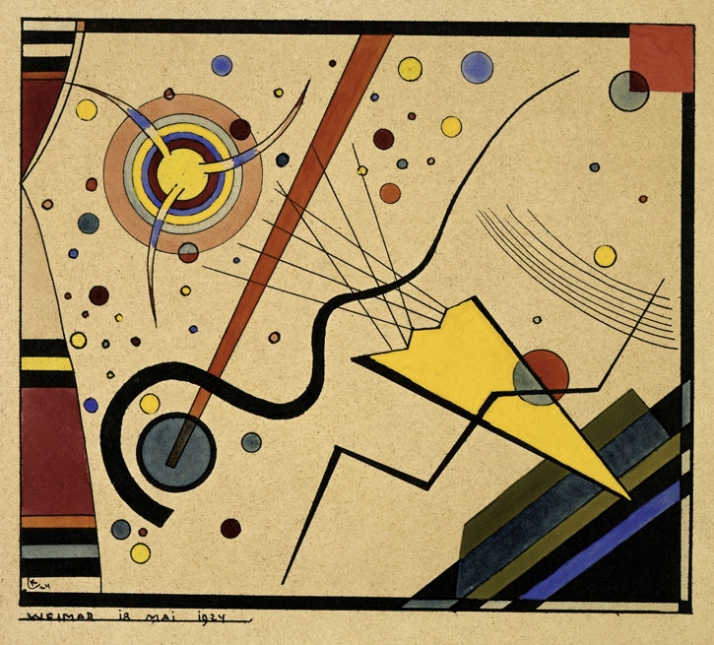
Wassily Kandinsky
Untitled (from the portfolio for Walter Gropius on his birthday, 18th May 1924), 1924
Black ink, water colours and opaque colours
19.6 x 22.5 cm
Bauhaus-Archiv Berlin
© VG Bild-Kunst, Bonn 2009

Marcel Breuer (design and realisation)
Gerhard Oschmann (reconstruction)
Lady’s dressing-table from the Bauhaus experimental house “Am Horn”, Weimar, 1923 / 2004
168 x 126.5 x 48 cm
Photo: Hartwig Klappert, Berlin
Stiftung Bauhaus Dessau
Other events of the exhibition include a five day International Symposium “Global Bauhaus” which will take place on September 21st – September 26th, 2009 at the Martin-Gropius-Bau, Cinema and Stiftung Bauhaus Dessau. The Symposium will focus on the internationalization, the network character of the avant-garde and the migration paths of the Bauhaus and examine the major questions such as: How did the Bauhaus achieve such a world-wide influence and become an exemplary institution? Who were the multipliers of the Bauhaus idea? What does the Bauhaus stand for today? The speakers are worldwide leading architects, artists, design historians, art teachers and cultural scholars who have engaged in the research of the history and influence of the Bauhaus.
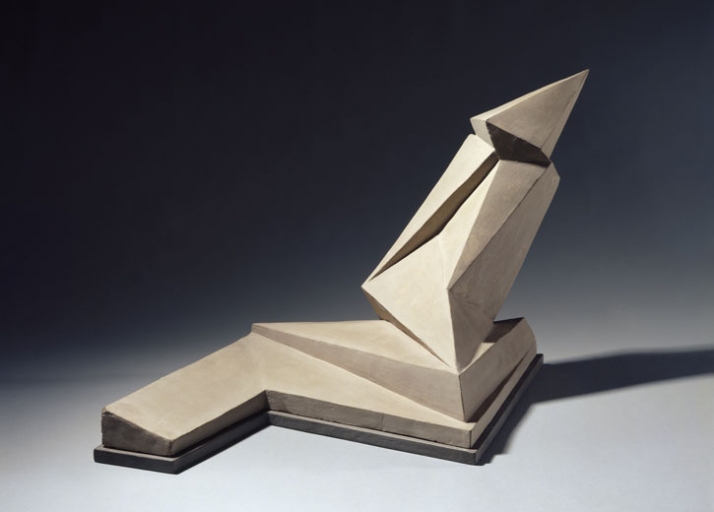
Walter Gropius
Work model for the memorial for the “March Heroes”, 1921
Klassik Stiftung Weimar
© VG Bild-Kunst, Bonn 2009
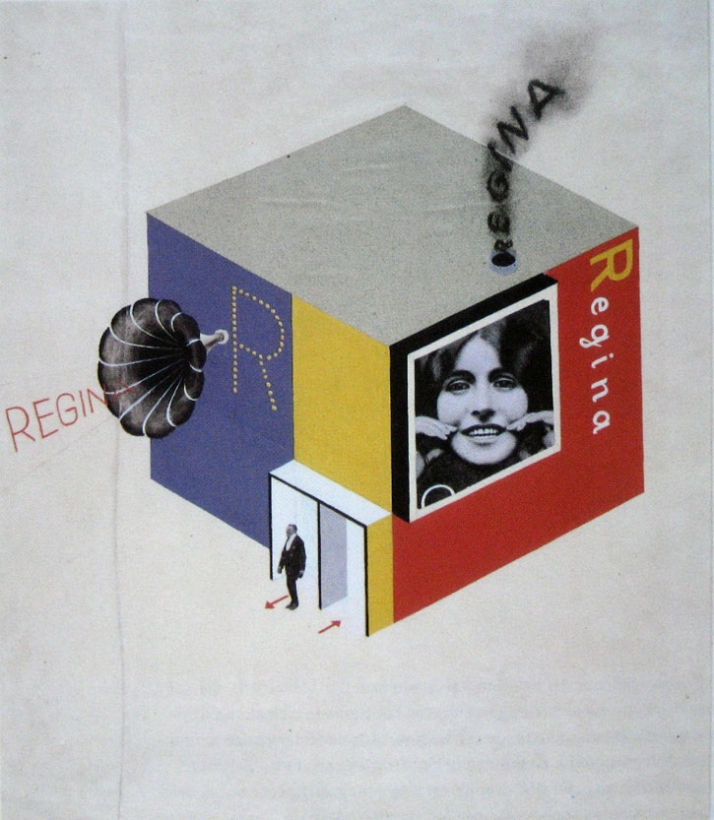
Herbert Bayer
Design for the multi-media trade fair stand of a toothpaste manufacturer, 1924
Opaque colours, charcoal, coloured ink, graphite and collage elements on paper
54.6 x 46.8 cm
Harvard University Art Museums, Gift of the artist
© VG Bild-Kunst, Bonn 2009
Another interesting event which twenty lucky pupils from partner universities will participate in is the Bauhaus Summer School which will last eight to ten days in mid- September 2009 at Weimar – Dessau – Berlin. They will participate in seminars given by members of the Bauhaus institutions. Emphasis will be placed on the intimate encounter with ideas and artifacts of the Bauhaus at the original locations. To this end, they will be able to visit private homes and work with objects in the Bauhaus collection. The goal of this program is the support of international students in the area of Bauhaus research, the encounter of young people from different cultures, scholarly exchange of ideas and the intensification of project-oriented cooperation.
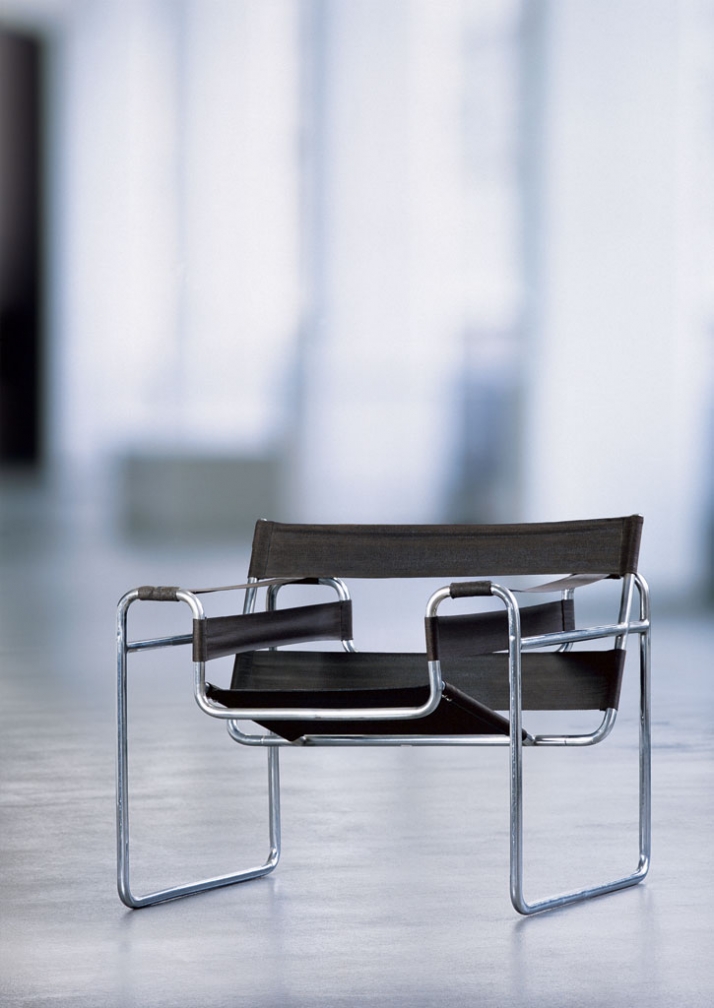
Marcel Breuer
Club Chair B 3, 2nd version, 1926
Tubular steel, welded transitions and screwed plug and socket connections,
anthracite-coloured wire mesh straps
70.5 x 81 x 69.5 cm; seat 30 cm high;
steel tube diameter 22 mm
Photo: Hartwig Klappert, Berlin
Stiftung Bauhaus Dessau
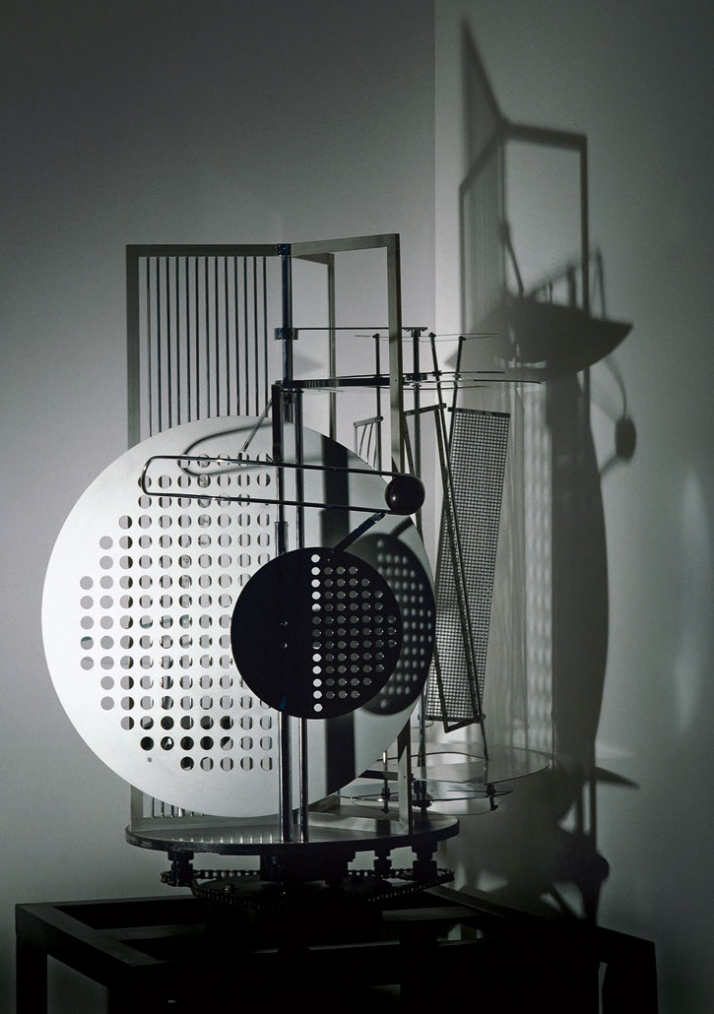
László Moholy-Nagy
Light Space Modulator, 1922-1930
(1970 replica of the original in the Busch-Reisinger Museum)
Chrome-plated steel, aluminium, glass, plexiglass, wood, electric motor
Height 91 cm
Photo: Hartwig Klappert, Berlin
Bauhaus-Archiv Berlin
© VG Bild-Kunst, Bonn 2009
Баувху/Bauwchu說這專頁讚
4月14日下午11:04 ·
Alfred Arndt - colour plan for the exteriors of the Dessau Masters’ houses (3 semi-detached houses) - 1926
The
was supposed to be an equitable place. When
founded the progressive school in 1919, he called for an environment that treated art and design—as well as men and women—with the same level of respect. “Every eligible person whose talent and training are considered adequate will be accepted without regard to age and sex,” he wrote in the Bauhaus’s statutes.
The reality, however, wasn’t so utopian. Most of the institution’s workshops—which ranged from sculpture and furniture design to stained glass and metalwork—reinforced the era’s discriminatory gender roles. When prospective student Anni Weil applied to the architecture program in 1921, Gropius’s response was blunt: “It is not advisable, in our experience, that women work in the heavy craft areas such as carpentry and so forth,” he wrote. “For this reason a women’s section has been formed at the Bauhaus which works particularly with textiles.” Bauhaus painting master
’s view of women was equally small-minded: “Where there is wool, there is a woman who weaves, if only to pass the time.”
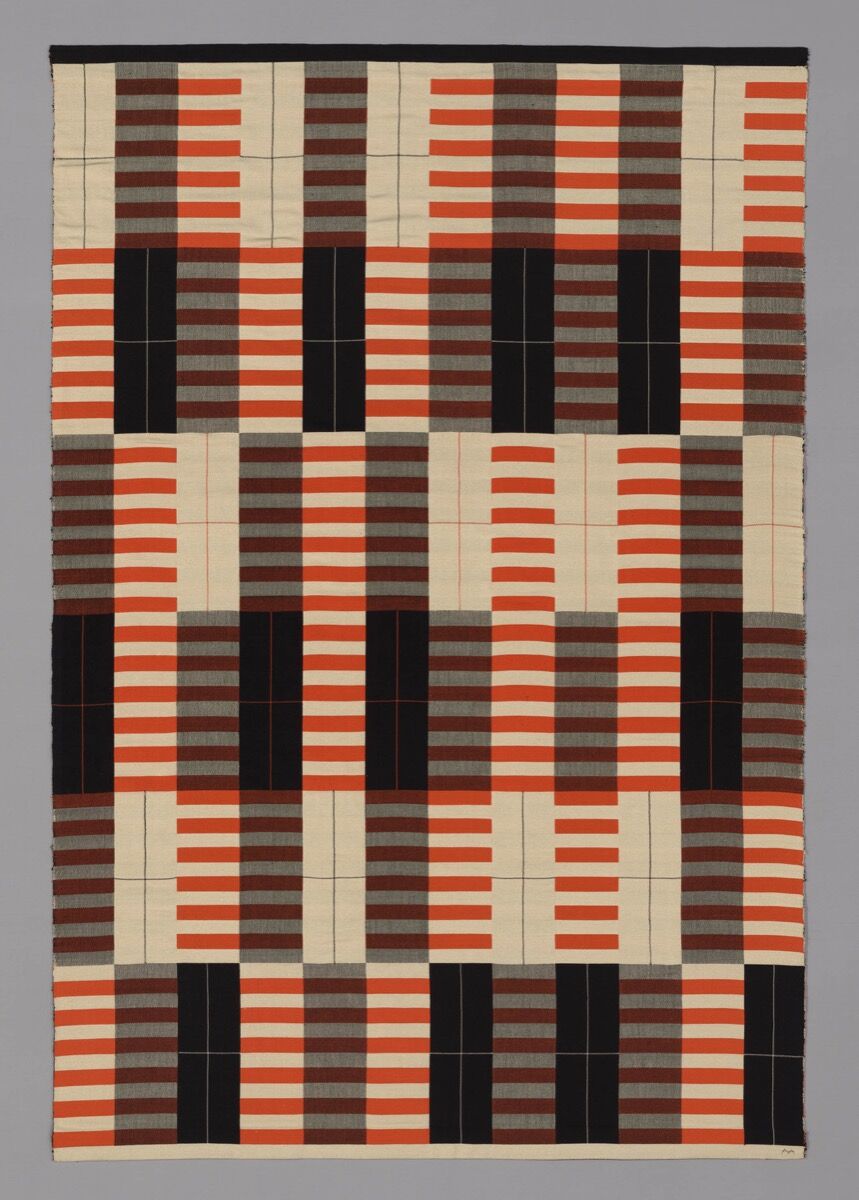
Anni Albers, Originally produced by the Bauhaus Workshop. Orange, Black and White, 1926–27 (produced 1965). © The Josef and Anni Albers Foundation / Artists Rights Society (ARS), New York. Courtesy of the Art Institute of Chicago.
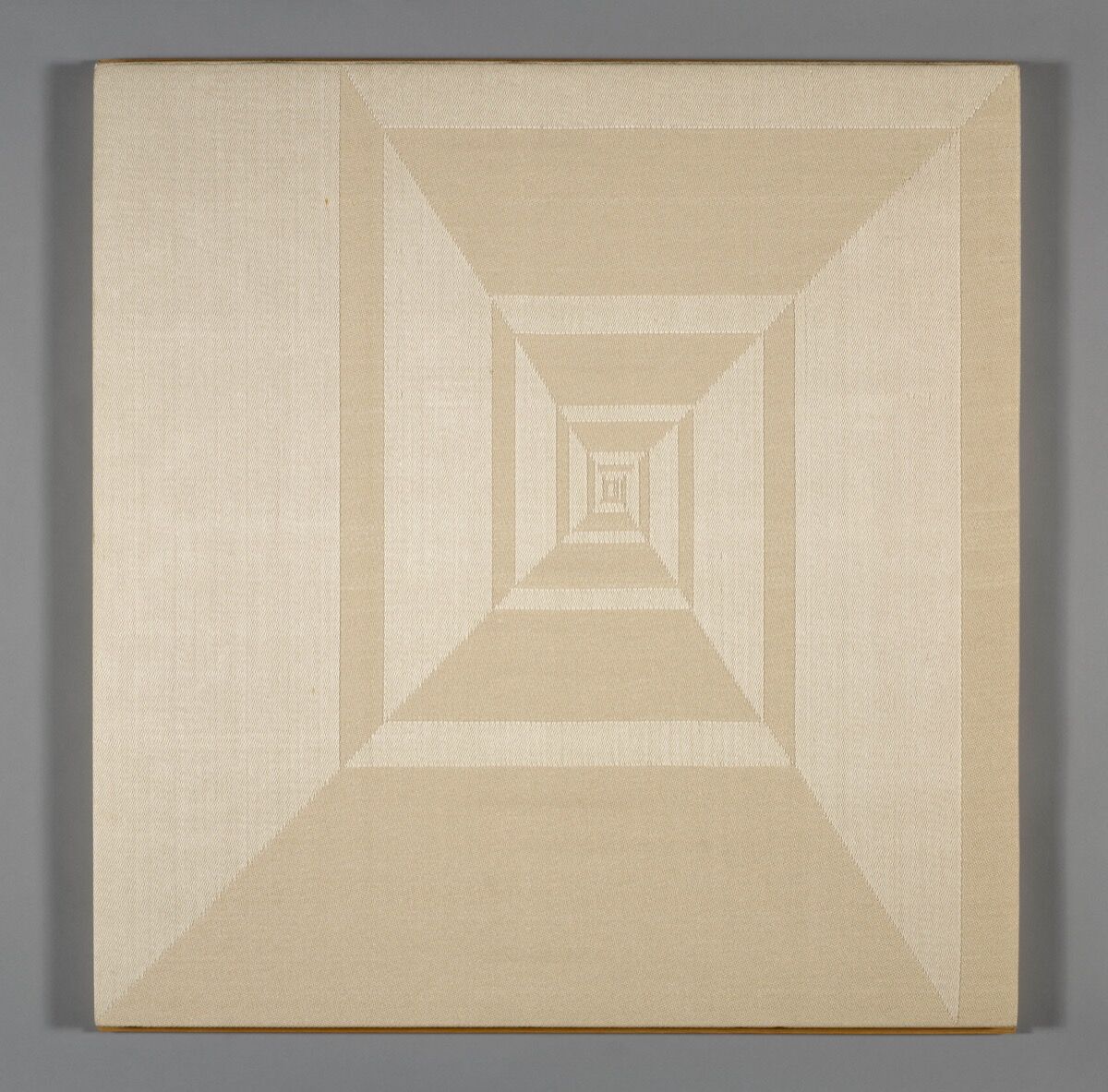
Ethel Stein, White Pinwheel, 1990. © Ethel Stein. Courtesy of the Art Institute of Chicago.
Most women who entered the Bauhaus indeed ended up making textiles in the weaving workshop, Gropius’s “women’s section.” Despite the limitations imposed on them, artists like Gunta Stölzl,
, and Marli Ehrman made the weaving workshop not only the Bauhaus’s most commercially successful sector, but also one of its most collaborative and audaciously experimental. “Clearly this was a place of groping and fumbling, of experimenting and taking chances,” Albers remembered in 1947.
Together, these artists reinvented the formal and functional possibilities of thread, a pursuit that transformed both the future of textiles and of abstract art. After the Bauhaus shuttered in 1933 and Albers and Ehrman relocated to the U.S., they forged new communities of female artists intent on ushering textiles—a medium long dismissed as so-called “women’s work”—into the fine art canon. This fall and winter, “Weaving Beyond the Bauhaus,” an exhibition at the Art Institute of Chicago, maps both the weaving workshop’s exuberant spirit of experimentation and its far-flung influence on artists across generations, linking Albers to contemporary sculptor
and Ehrman to the likes of revolutionary fiber artist
.
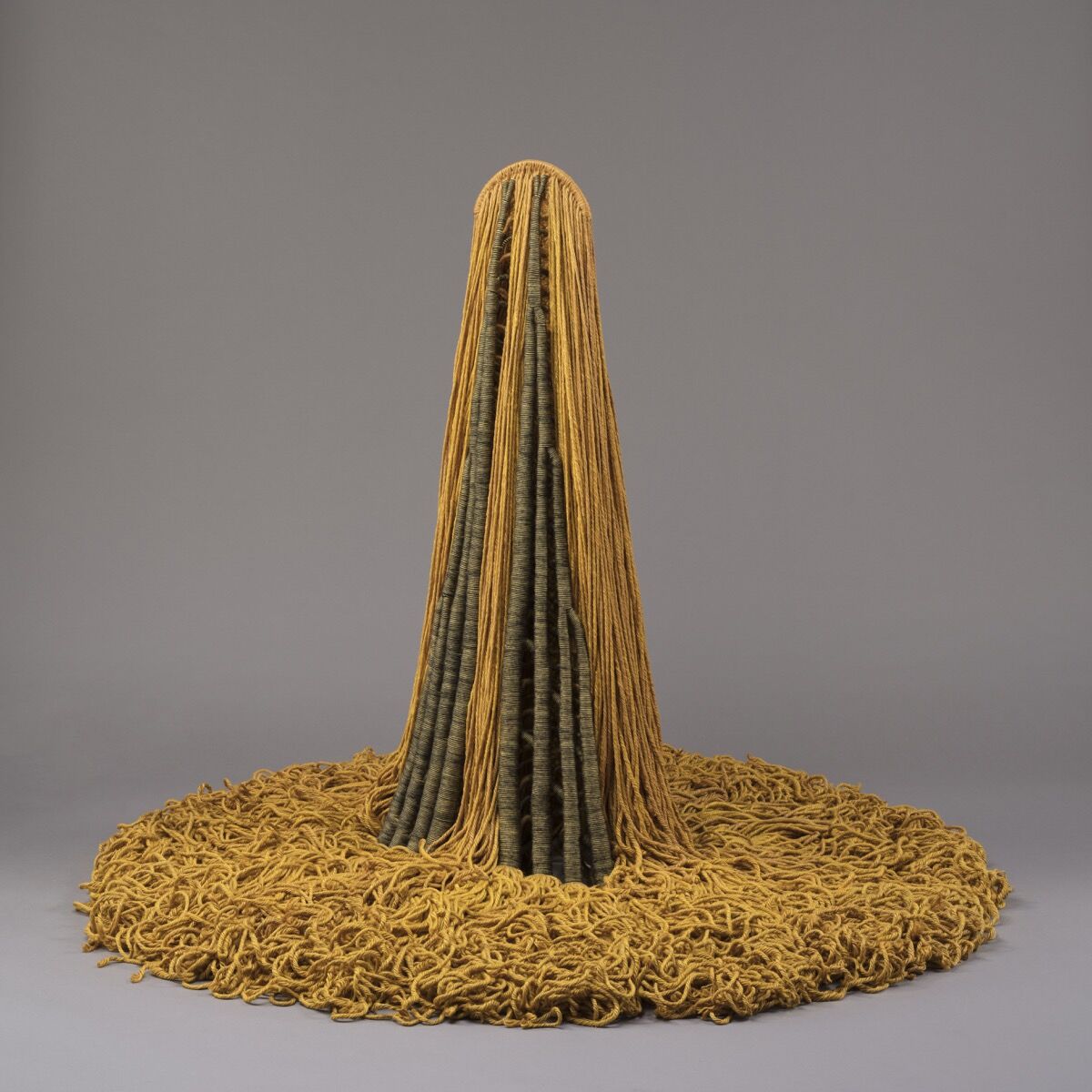
Claire Zeisler, Free Standing Yellow, 1968. Courtesy of the Art Institute of Chicago.
The power of this show lies in its ability to connect innovation with collaboration. Across the exhibition, curator Erica Warren highlights not only the individual contributions of each artist, but also the mentorships and friendships that bolstered them. “Women supporting women”—to borrow a contemporary tagline—is its subplot. “I find that it’s really valuable to look at relationships between groups of artists,” Warren explained, “and the role that educational institutions, museums, galleries, and professional and personal affiliations play in bringing artists together and really impacting their practices. I wanted to tell a story about that.”
The story begins in the Bauhaus weaving workshop. In the school’s early years, there was little to no formal instruction in the weaving sector—students learned by playing with materials and bouncing ideas off of each other. “What I learned I learned from my co-students,” Albers remembered in 1968. “It was in a great muddle and there was a great searching going on from all sides…but it wasn’t that you went there and were taking something home from there. You were a contributor.”
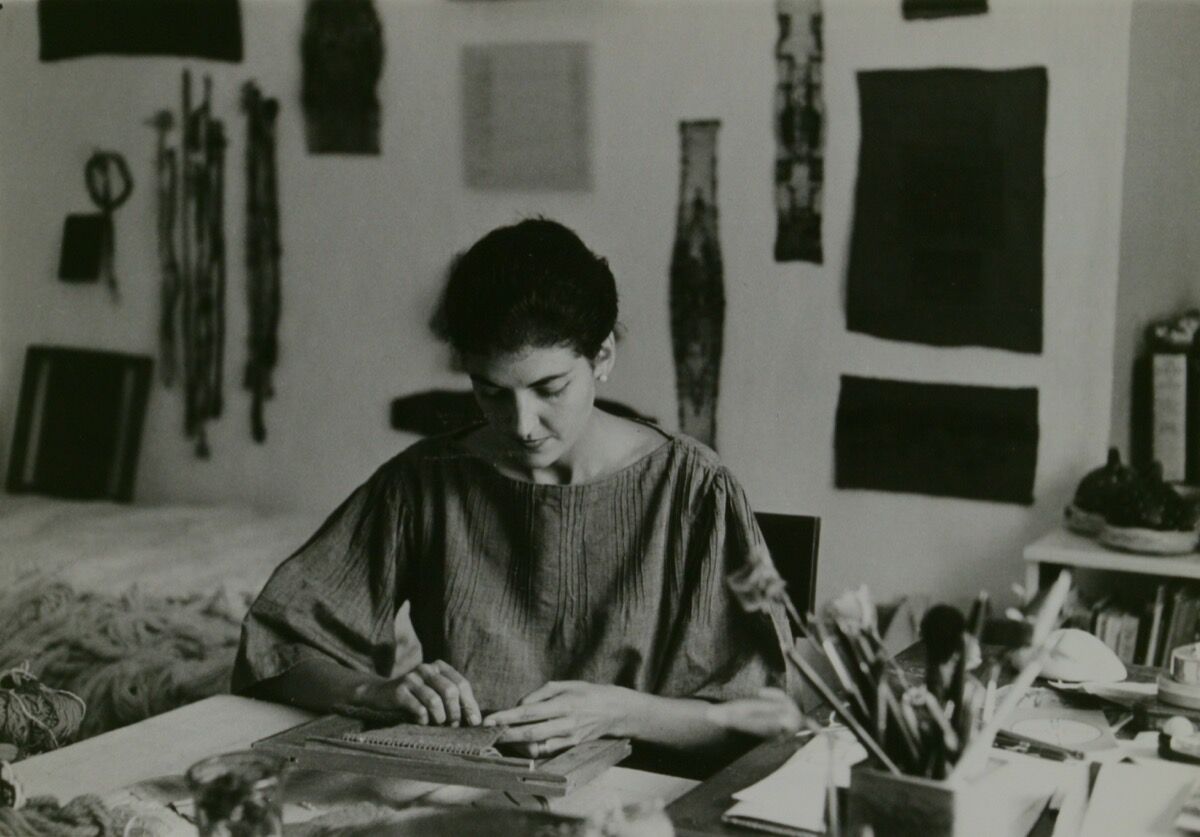
Sheila Hicks, 1963. Courtesy of the American Craft Council Library and Archives.
This “great muddle” inspired great improvisation. Weavers fused loom weaving with hand weaving, and eschewed patterns in favor of making unexpected, undulating decisions on the loom—a process akin to painting on canvas without following a preparatory drawing (a method encouraged by Bauhaus painting instructor
). They embedded cutting-edge, utilitarian materials like rayon and lurex into their work, too. For her thesis project, Albers created a new fabric that simultaneously reflected light and absorbed sound by joining cellophane and cotton.
Even after master weaver Gunta Stölzl became head of the workshop and began to establish a formal pedagogy, she encouraged artists to play with materials and tools on their own before demonstrating specific skills. She recognized this approach as “a way to unlock the potential of all of these really talented artists,” Warren explained.
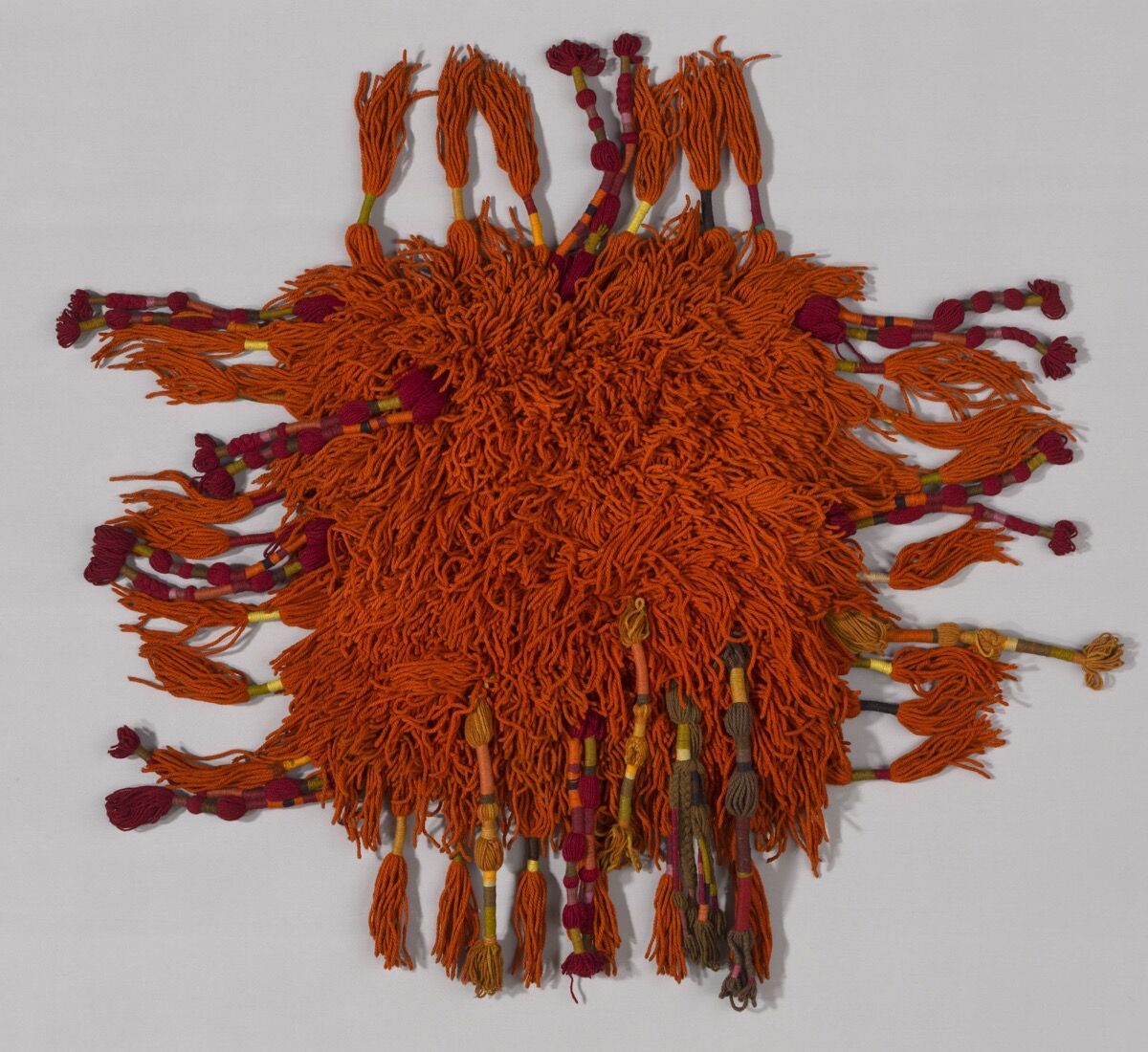
Sheila Hicks, Produced by V’SOSKE, Rug, ca. 1965. Courtesy of the Art Institute of Chicago.
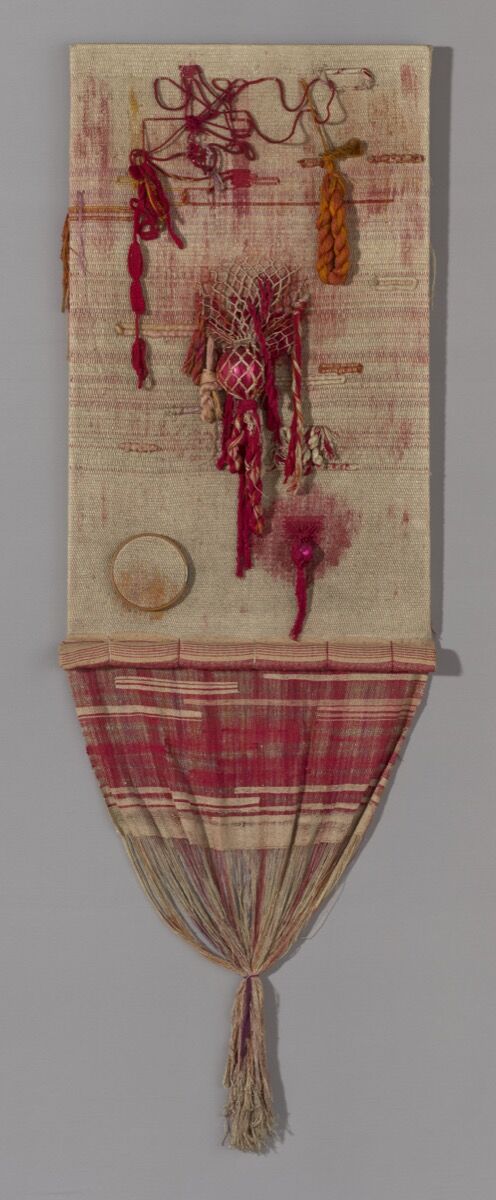
Claire Zeisler, Hanging, 1950–91. Courtesy of the Art Institute of Chicago.
When the Bauhaus closed due to decreased enrollment and increased pressure from the Nazi regime, Albers and Ehrman ferried these methods to the United States, where they posted up as instructors at progressive art schools. Albers landed at Black Mountain College in Asheville, North Carolina, while Ehrman found a post at
’s New Bauhaus (later known as the Institute of Design) in Chicago. (Stölzl established a practice in Switzerland.)
The exhibition focuses on the lineage of American artists connected to Albers and Ehrman—in particular, the community of mostly female artists orbiting around Ehrman and her students in Chicago. Ehrman taught briefly at Black Mountain College and Chicago’s Hull House, but it was at the New Bauhaus where she wielded her greatest influence as the beloved instructor of some of the 20th century’s most innovative artists working with fiber—Else Regensteiner,
, and Tawney among them.
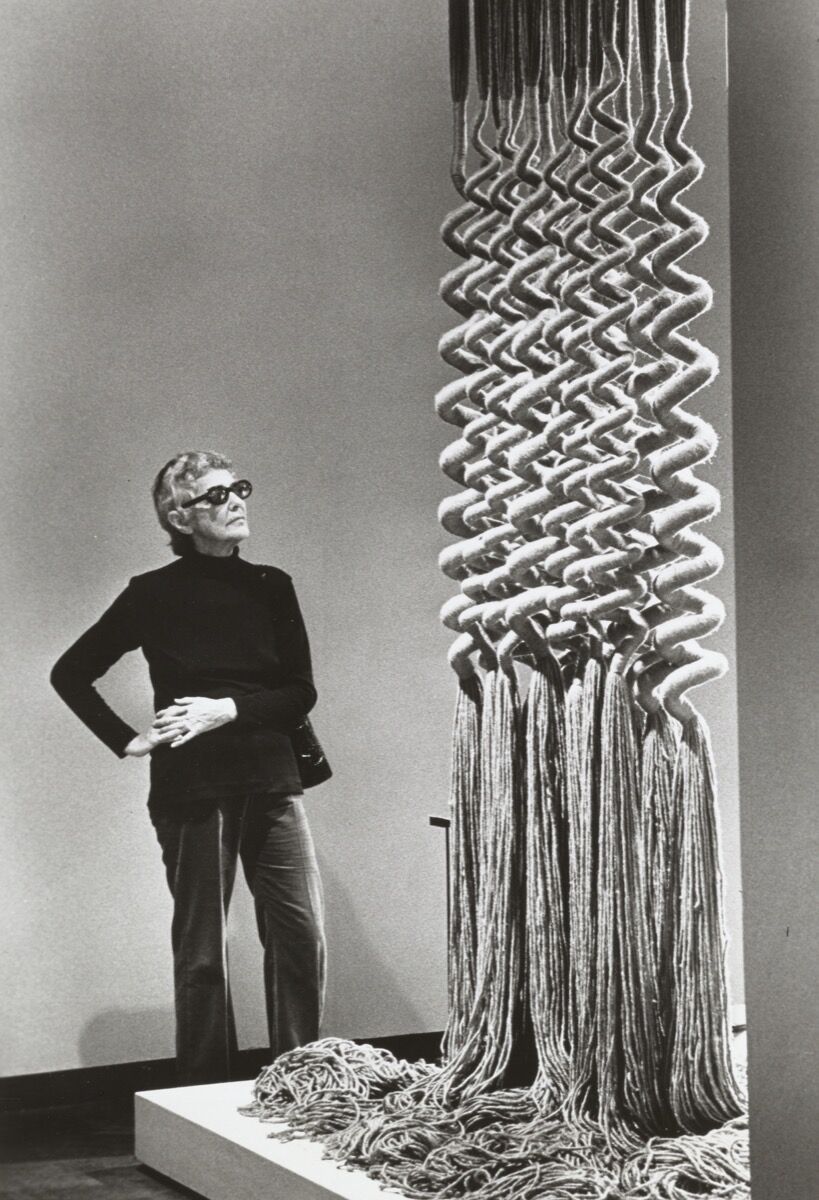
Claire Zeisler, 1972. Courtesy of the American Craft Council Library and Archives.
Ehrman’s students were so dedicated to her, as Janet Koplos and Bruce Metcalf point out in Makers: A History of American Studio Craft (2010), that when the school’s weaving workshop eventually closed, they incorporated themselves as the “Marli Weavers” to “preserve the spirit of the former class and to promote the study of handweaving and design.” In 1991, Regensteiner gushed: “Everything I have achieved during the fifty years of my career had its source in the Bauhaus philosophy and the guidance of Marli Ehrman.”
For her part, Regensteiner went on to found the design studio reg/wick with fellow New Bauhaus student Julia McVicker. There, they created custom fabrics for the likes of
and were included in the Museum of Modern Art’s watershed “Good Design” exhibition series (1950–55) alongside Ehrman, Albers,
, and others.
Zeisler took a more sculptural approach. She was one of the first to weave yarn into monumental, three-dimensional forms. “From the beginning [Zeisler] concentrated on extending the boundaries that limit weaving techniques,” pioneering Chicago gallerist Katharine Kuh, who represented many Bauhäusler and their successors, explained in a 1979 catalogue essay for Zeisler’s retrospective at the Art Institute of Chicago. “An inveterate innovator, she focuse[d] on three-dimensional and spatial possibilities, turning volatile fiber works into a new kind of sculpture.”

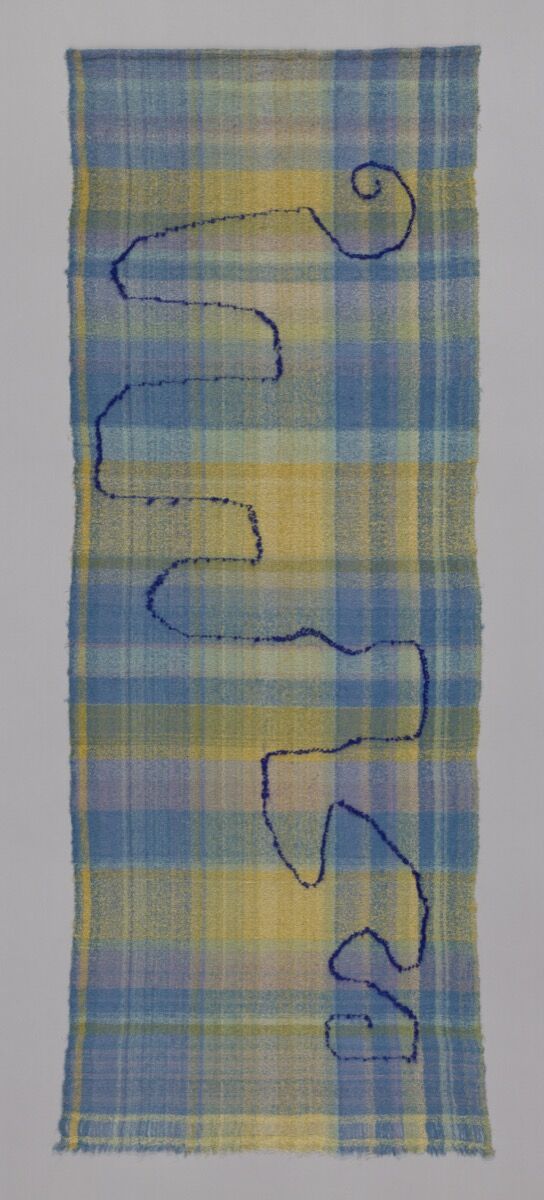
Else Regensteiner, Blue River I, 1963–64.
Lenore Tawney. Landscape, 1958. Alexander Demond Fund. © Lenore G. Tawney Foundation.
It is fellow New Bauhaus student Lenore Tawney, though, whose work reveals the most delightful connections between her community and her deeply innovative practice. Tawney not only studied with Ehrman, but also forged long-lasting friendships with Zeisler, Kuh, and artists
(who studied with
) and Sheila Hicks (who met Anni Albers while studying at Yale and is one of the only artists included in the exhibition who is still living).
Like Zeisler, Tawney expanded the scale, density, and texture of woven artworks. “[She] was a very important pioneer in the field,” Zeisler said of Tawney in 1981. “[She] reached her peak before I had.” Tawney’s works were indeed unprecedented. She punctuated skeins of silk and cotton fibers with airy voids and natural objects like feathers, stones, and sticks, then suspended her towering constructions from the ceiling, as if floating. “All my work should be hung out from the wall, as space, or breathing, is part of it,” she stressed in 1982.
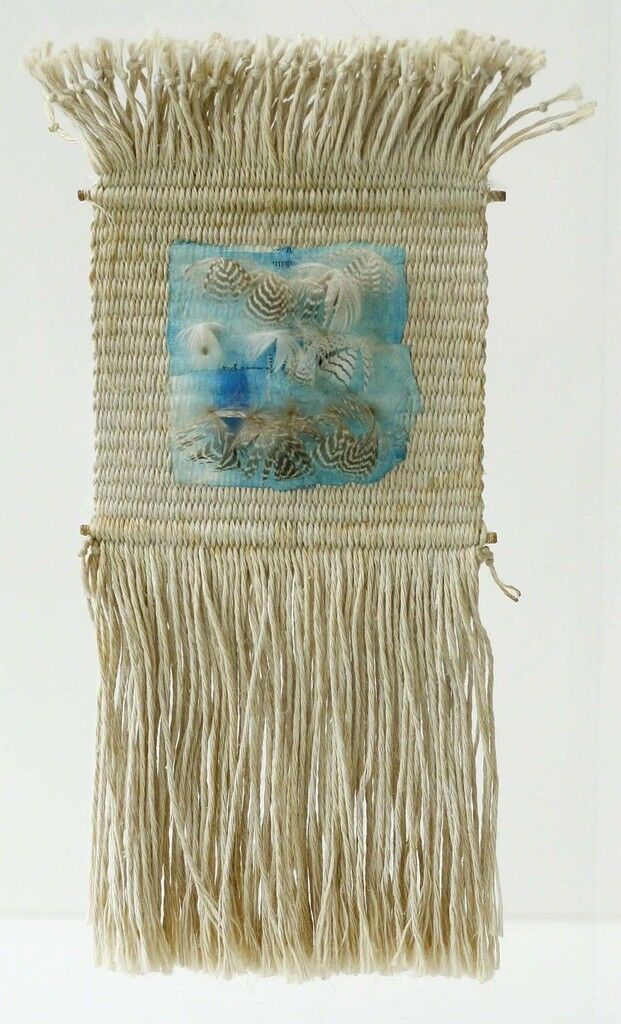
Lenore Tawney
Untitled, ca. 1970
Somewhat unexpectedly, her practice also extended to collaged postcards and letters, which she sent to fellow artists and friends around the world, like Kuh and Stein, with whom she shared ideas. Several are included in the exhibition, and they feel like its crown jewels. One envelope to Stein incorporates materials Tawney used in her monumental works: a small feather and bits of found paper. More interestingly, though, are its contents: article clippings meant to inspire Stein, and a note of encouragement from Tawney scrawled in haphazard cursive. “Dearest Ethel,” she wrote, “I find these things do help. Love, Lenore.”
Nowhere in the show is Warren’s thesis more clear. Among these artists, formal experimentation was nourished by close relationships between women and the abiding support they offered one another.
Alexxa Gotthardt is a contributing writer for Artsy.




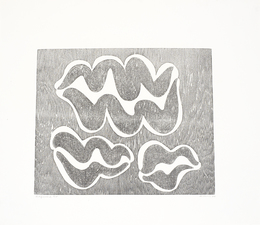
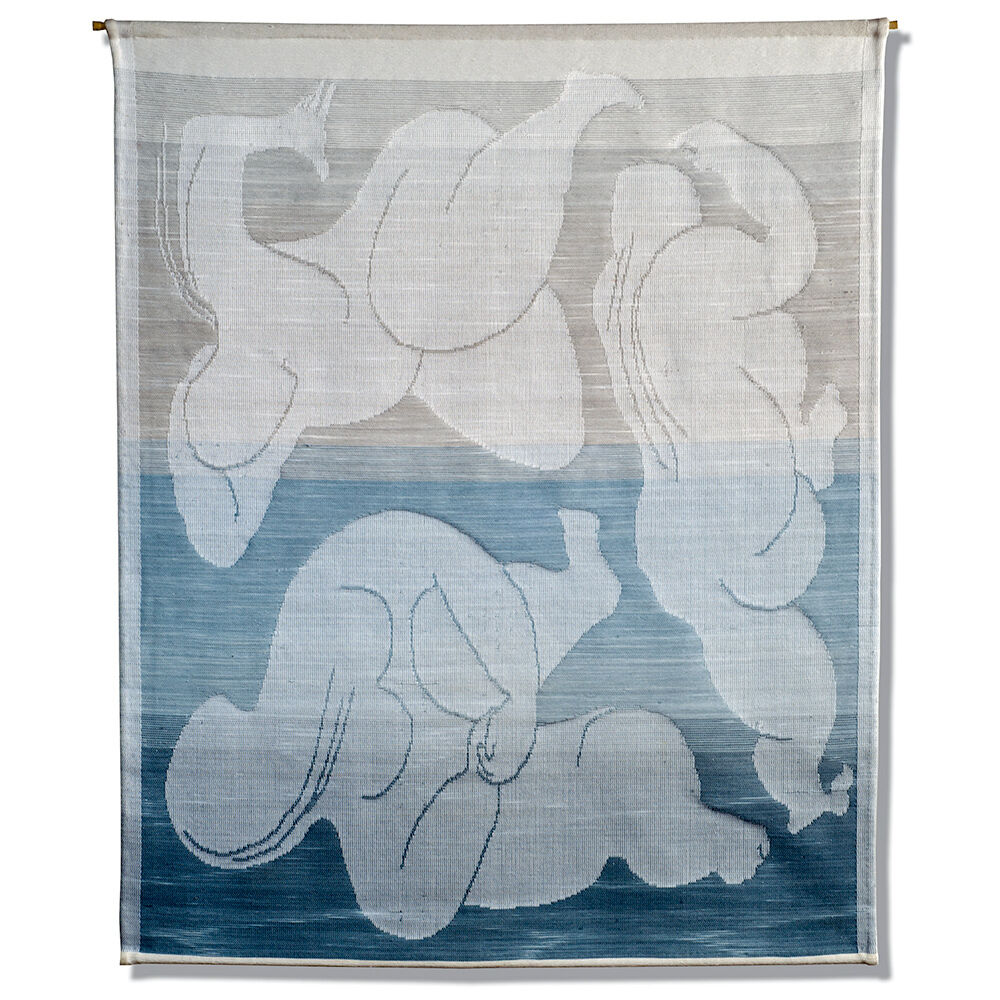
沒有留言:
張貼留言